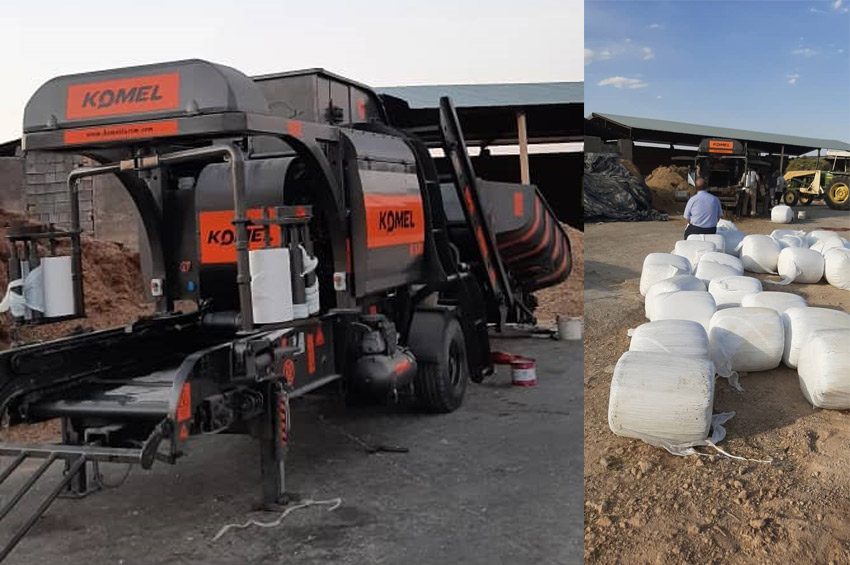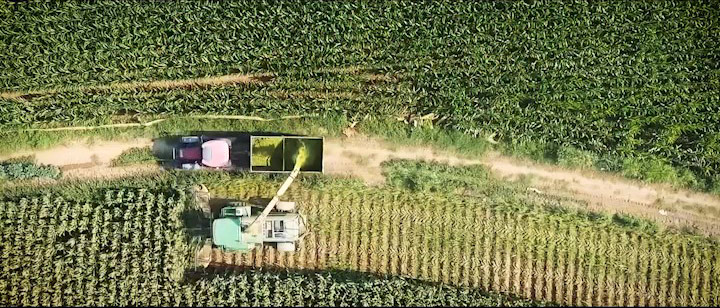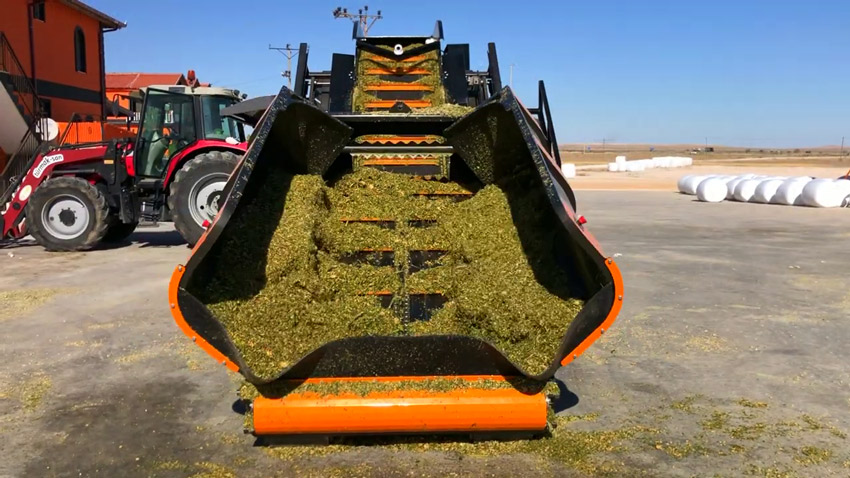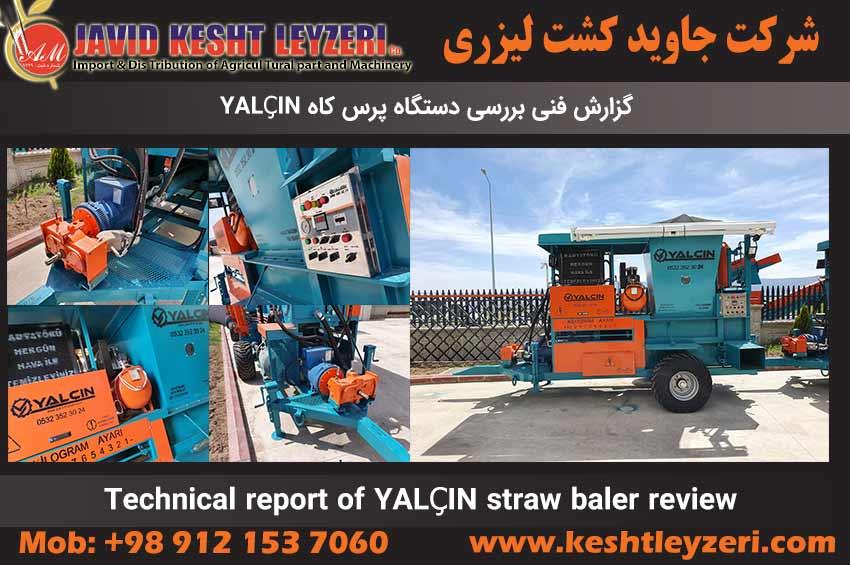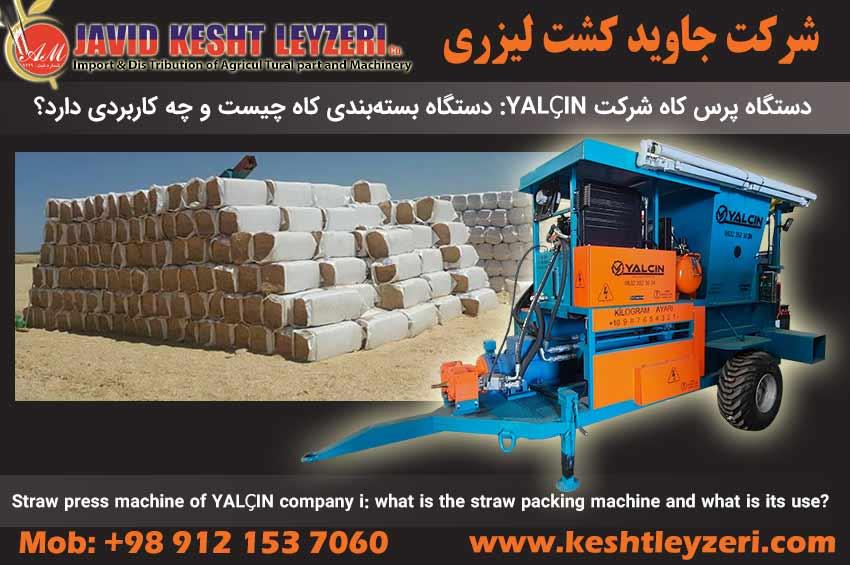
The best time to harvest fodder for silage
javid keshtleyzeri Co.ltd
Harvesting fodder on time will increase the quality of food value as well as the quality of prepared feed. This is why for preparing dry fodder or making silage, forage harvest time is very important. Such quality feed causes easy digestion of food in the animal's stomach, and as a result, the production of milk or animal meat increases.
During the plant's life, in a limited stage, the amount of food used by the animal and its energy amount reach its maximum, which is the best time to harvest fodder.
The right time to harvest fodder
Harvesting the crop before the right time and after it will cause damage to farmers and ranchers and good feed will not be obtained from silage. By choosing the right time to harvest the crop, we get the highest amount of fodder dry matter per hectare and we have prepared fodder that can be silage well.
For you to know more about knowing when is the best time to harvest your crop, experts have conducted experiments and concluded that as the growth of the plant increases from the flowering stage onwards, the amount of dry matter produced per hectare It increases until the stage of grain ripening reaches the maximum production and after this stage, the dry matter decreases.
Experts have conducted other tests on the amount of dry matter of the plant and the amount of nutrients of the product in different periods of growth, which shows that the percentage of dry matter increases during the period of seed setting until the grain hardens. As the seed closing stage becomes more complete, the proportion of seeds in the whole plant increases, and because the seeds contain starch, the amount of energy increases.
Conclusion
From the two experiments conducted, it can be concluded that the best harvesting time in fodder corn cultivation is when the seed is in the pulping stage. Farmers should know this time well and harvest the crop quickly and make silage immediately.
Dear livestock farmers, remember that with every day of delay in harvesting, both the nutritional value of the product decreases and the yield per hectare decreases. As the nutritional value of the produced fodder decreases, good feed will not be produced in the silage.
The proper moisture level during forage harvesting and silage will increase the rate of fermentation, as well as increase the quality and reduce the waste of silage materials. Autumn fodder usually has more moisture than desired.
In this season, because the intensity of the sun is low, as a result, the air humidity increases and a lot of dew is produced. In addition, the fall of autumn rains makes it difficult to silage plants such as clover and alfalfa, as well as corn and sorghum at the time of harvest, because they have high humidity.
To reduce the humidity of autumn fodder such as clover and alfalfa, you can leave them in the field for a while after harvesting so that their humidity reaches the optimal level in the vicinity of sunlight and wind. But for plants such as corn and sorghum, this cannot be done because the harvest of this fodder is done using a chopper machine that simultaneously harvests and chops the grass, which in this case must be transferred to silage.
High humidity causes the extract to flow and waste its nutrients. In addition, weak sourness and rotting of silage material will increase. At the same time, the amount of moisture percentage of fodder and silage feeds is not a constant number and can vary depending on the type of food and silage structure.
For example, forage that has the ability to absorb additives and high moisture content can be ensiled with higher moisture content. In such a situation, auxiliary materials should also be used while making silage. The height of the silage has a great effect on the amount of silage forage sap, as the height of the silage increases, the amount of sap removed increases.
Experts have conducted tests to determine the appropriate humidity level of above-ground and underground silos according to its height, and the appropriate humidity level for silos is shown below.
In moat silos, if the height is 3.5 meters or less, the appropriate humidity is 65-75.
In trench silos, if the height is more than 3.5 meters, the appropriate humidity is 60-70.
In above-ground silos, if the height is 3.5 meters or less, the suitable humidity is 75-75.
In ground silos, if the height is more than 3.5 meters, the suitable humidity is 68-73.
Considering the above, you can provide the best amount of moisture for your fodder mass, according to the type of silage and its height. Just as high humidity causes the loss of silage nutrients, the lack of plant moisture also causes the mass of fodder to not be compressed well and its air not to be completely removed during silage.
The most appropriate time to harvest fodder plants such as corn, sorghum and barley is in the stage of seed pulping. In such conditions, the plant has 30 to 35% dry matter and the mass of silage will have the highest nutritional quality in livestock feeding.
The right time to harvest
To know the right time to harvest these plants, you should check the condition of the seeds twice a week during the seed setting stage. When the seeds have a pulpy state and a depression has been created on them, press them with two fingers, if the seed does not resist much and is crushed, know that it is time to harvest.
When harvesting, the percentage of dry matter of the plant is an important factor in adjusting the harvester (chopper). If the amount of dry matter of the plant is 30-35%, chopping the fodder into 1-2 cm pieces will be enough. But if there is a delay in harvesting the product and the amount of dry matter increases, the pieces should be cut by 1 centimeter.
If we have to harvest the product earlier than the right time, the size of the pieces should be larger than 2 to 3 cm. Pay attention to the above points when harvesting the product with a chopper.
Methods for detecting the moisture content of fodder
There are three ways to determine the moisture content of fodder.
a) Drying the fodder sample
This method is done with laboratory devices, but the farmers may not have access to the laboratory. Therefore, there are simpler methods to detect the moisture content of fodder, which we will describe below.
b) Determining the amount of moisture by experimental and sensory method
1- Take a handful of chopped fodder and press it in your hand and make it into a ball and hold it in your fist for 20 to 30 seconds. Then quickly open the fist and compare with the following states and determine the moisture level of the plant.
First mode:
The pellet maintains its shape and a relatively large amount of sap flows from it. In this case, the humidity level is higher than 75%.
Second mode:
The bullet keeps its shape, but a little sap flows from it. In this case, the humidity level is about 70 to 75%.
Third mode:
The state of the pellet collapses slowly and the leachate is not observed. In this case, the humidity level is about 60 to 70 percent.
Fourth mode:
The state of the pellet collapses slowly and the leachate is not observed. In this case, the humidity level will be lower than 60%.
2- Determining the right time to harvest fodder
That is, at the stage when the plant has about 30-35% dry matter, if we take a bunch of fodder and twist it, a small amount of moisture will be separated from it. If the dry matter is less than 30 to 35%, no moisture will be separated from it.
3-Determining the amount of humidity using paper towels with straw paper
Straw paper and paper towels absorb moisture easily, which can be used to estimate moisture. The procedure is that we place the paper with a napkin between the fodder sample.
Now, if the percentage of dry matter is at the optimal level (30 to 35 percent), in order for the paper to absorb the moisture, it should be touched with the plant parts by pressing the paper with the hand. If the percentage of dry matter is more than the mentioned amount, it will not absorb moisture even with heavy hand pressure on the napkin.
If the percentage of dry matter is less than the discussed range, the moisture will be absorbed by the paper without pressing the sample on the paper.
Decreasing the amount of moisture If we have to harvest fodder with excessive moisture, it can be left in the field for a while after harvesting to reduce its moisture. Of course, this practice is not practical for fodder such as corn and sorghum.
To reduce the humidity in alfalfa and clover in summer days, it is enough to leave the harvested grass in the field for one to two hours until the humidity of the forage reaches about 70%.
If the harvested forage loses too much moisture before harvesting with the chopper, many leaves will be lost at harvest time. In such a case, you should wait until the early morning when the dew is sitting on the fodder, then harvest. Forage that does not have enough moisture to be ensiled can be mixed with freshly harvested forage in silage so that the moisture content of the ensiled mass becomes appropriate and desirable.
I hope that by using the above material, you will have the best quality for ensiling all kinds of fodder, surely by consulting with the experts of our company, you can have the best output in your products. In the following, you can click on the image or the following link to view the images of different types of fodder silage machines:
Fodder packing machine - corn silage fodder

